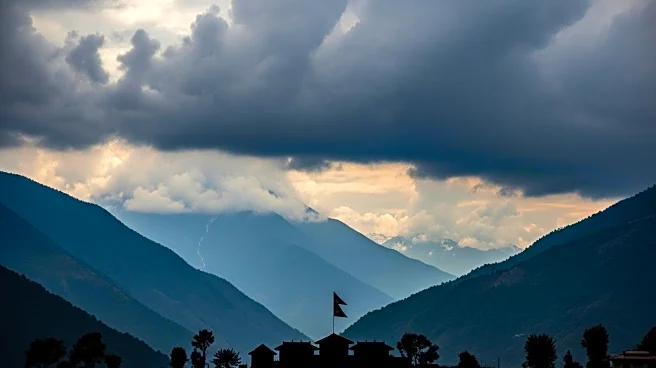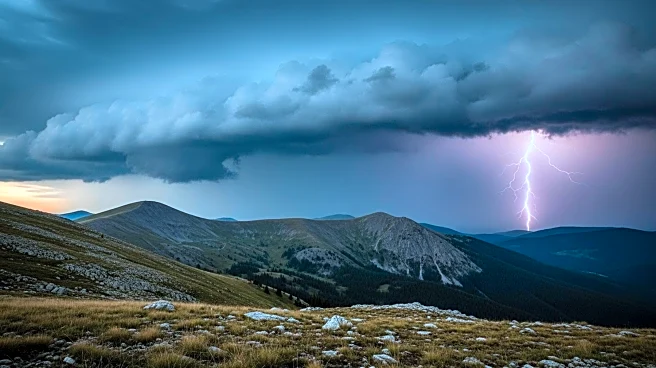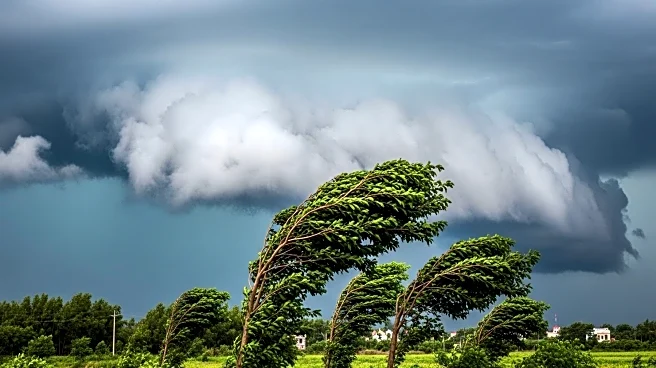What is the story about?
What's Happening?
In Nepal, landslides and floods triggered by continuous rainfall have resulted in the deaths of at least 38 people. The natural disaster has compounded the difficulties faced by the interim government, which assumed power following violent protests that ousted the previous administration. The heavy rains have obstructed highways connecting Kathmandu, the capital, with other parts of the country, and disrupted flights, causing significant transportation issues. Many people returning to Kathmandu after the Dashain festival are stranded due to these disruptions. The government has closed offices on Sunday and Monday, highlighting the severity of the situation. Rescue operations are underway, with Nepal's army deploying troops and helicopters to over two dozen locations.
Why It's Important?
The landslides and floods in Nepal are significant as they pose a major challenge to the newly established interim government, which is already grappling with political instability. The natural disaster has exacerbated the country's infrastructure issues, particularly in transportation, and has disrupted daily life for many citizens. The government's response to this crisis will be crucial in determining its ability to manage emergencies and maintain public confidence. Additionally, the situation in Nepal has implications for neighboring India, where similar weather conditions have led to fatalities and emergency alerts, highlighting the broader regional impact of these environmental events.
What's Next?
The interim government in Nepal is likely to face increased pressure to address the immediate needs of those affected by the landslides and floods, as well as to improve infrastructure resilience against future natural disasters. The ongoing rescue operations by the army will be critical in mitigating the impact of the disaster. Political leaders may need to prioritize disaster management and recovery efforts to stabilize the situation and prevent further loss of life. In India, authorities are expected to continue monitoring weather conditions and provide necessary support to affected regions, particularly in Bihar and West Bengal.
Beyond the Headlines
The recent natural disasters in Nepal and India underscore the vulnerability of the region to extreme weather events, which may be exacerbated by climate change. This situation highlights the need for improved disaster preparedness and infrastructure development to withstand such events. The political transition in Nepal adds a layer of complexity, as the interim government must navigate both political and environmental challenges simultaneously. The response to these disasters could influence future policy decisions regarding climate resilience and emergency management in the region.
AI Generated Content
Do you find this article useful?














